Best gaming smartphone 2023: hero handsets for setting high scores
Taking no calls 'cause I'll be gaming
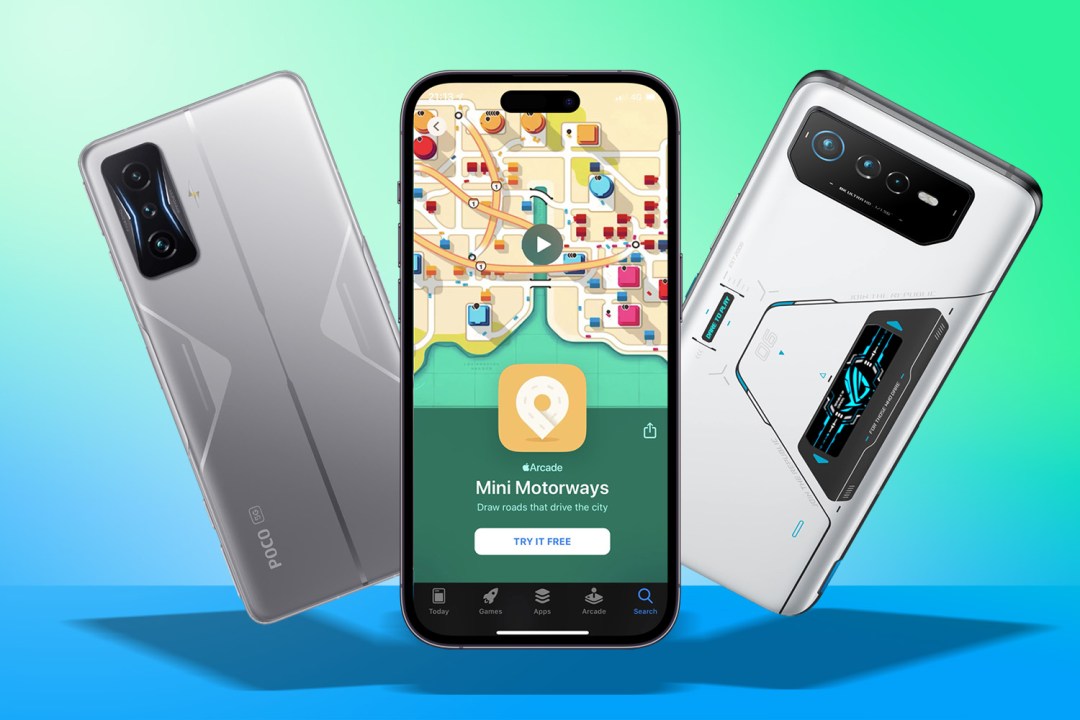
From budget bargains and mid-range marvels to fabulous flagships, foldable friends and the best smartphones on sale overall, contenders for the title of best gaming smartphone come in all shapes and sizes.
Mobile tech has come on in leaps and bounds recently, meaning you can play preposterously popular 3D titles like Genshin Impact and Call of Duty Mobile while on the move. Sorry, Doodle Jump and Angry Birds – your time has passed. As you can imagine, a bang-up gaming phone needs a processor capable of pushing performance to the max, more RAM than a desktop computer, and a dazzling display. There’s also no shortage of accessories that can take your mobile gaming to the next level.
Even with that knowledge, separating the best from the rest in a market this crowded is no easy feat. That’s why we’ve taken the liberty of spotlighting some of the very best gaming phones we’ve encountered on our travels. Are you ready, player one?
What’s the best gaming smartphone?
Before we crack on with the full list, here’s a look at our three top choices:
- Best overall gaming smartphone: Asus ROG Phone 7 Ultimate (buy now)
Outstanding performance, an extensive accessory list and active cooling make Asus’ latest ROG handset the clear winner for gamers who don’t like to compromise. It’s big, with a distinctive design that won’t be to all tastes, and an average collection of cameras for the price – but for consistently smooth frame rates, it’s a superb buy. - Best iOS gaming smartphone: Apple iPhone 14 Pro Max (buy now)
Apple Arcade subscribers can do no better than the iPhone 14 Pro Max. It’s beyond powerful, with a stunning screen that’ll have any game looking its best, and a library of titles available through the App Store that gets close to full-on games consoles in a way no Android phone can match. It’s also just a brilliant all-round smartphone, even with that wince-inducing price. - Best small gaming smartphone: Asus Zenfone 10 (buy now)
There’s so little choice when it comes to powerful smartphones that also slip into your smallest pockets, but Asus is still flying the flag for compact flagships. The Zenfone 10 is the latest and greatest, with a Snapdragon 8 Gen 2 CPU that can keep pace in even the most demanding mobile games, and a screen that stays on the right side of 6in. It doesn’t have the best cameras around for the cash, but that’s the only real negative – it’s a corker just about everywhere else. - Best affordable gaming smartphone: Nothing Phone 2 (buy now)
Nothing’s second stab at a smartphone sticks with a previous-gen chipset, which helps keep the price low enough to earn it our recommendation for gamers on a modest budget. There are no dedicated buttons, official accessories or extra USB ports – but it’ll still chew through anything in the Google Play Store, and is very capable everywhere else.
Our roundup of the best smartphones for gaming:
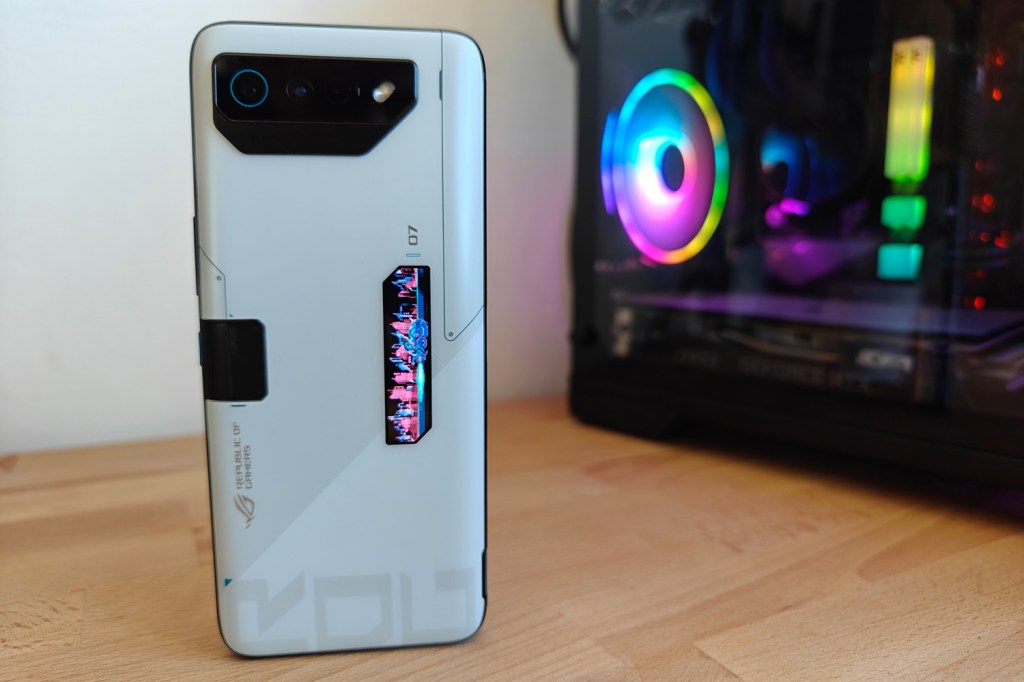
1. Asus ROG Phone 7 Ultimate
Asus’ latest Android gaming phone is ‘imperiously powerful’ and ‘built with the gamer in mind’ according to our review. It manages this through the combination of its excellent specs, a screen you won’t want to take your eyes off, and a smattering of thoughtful accessories that make using it as more than just a plain old smartphone much easier.
Under the hood you get a Snapdragon 8+ Gen 2, a huge 16GB of RAM – the same as in a PlayStation 5 – and 512GB of storage, so you’ll be able to download plenty of games from the Google Play Store without worrying too much about running out of space. The 6.78in screen takes the refresh rate all the way up to 165Hz, and it’s an AMOLED panel for vivid colours and excellent contrast.
In the box you also get an active cooling stand, which plugs into the extra USB-C port halfway along the side of the phone to both support it on a table and, with its quietly whirring fan, dissipate some of the heat the phone produces and prevent it from slowing down.
Read more: Asus ROG Phone 7 Ultimate review
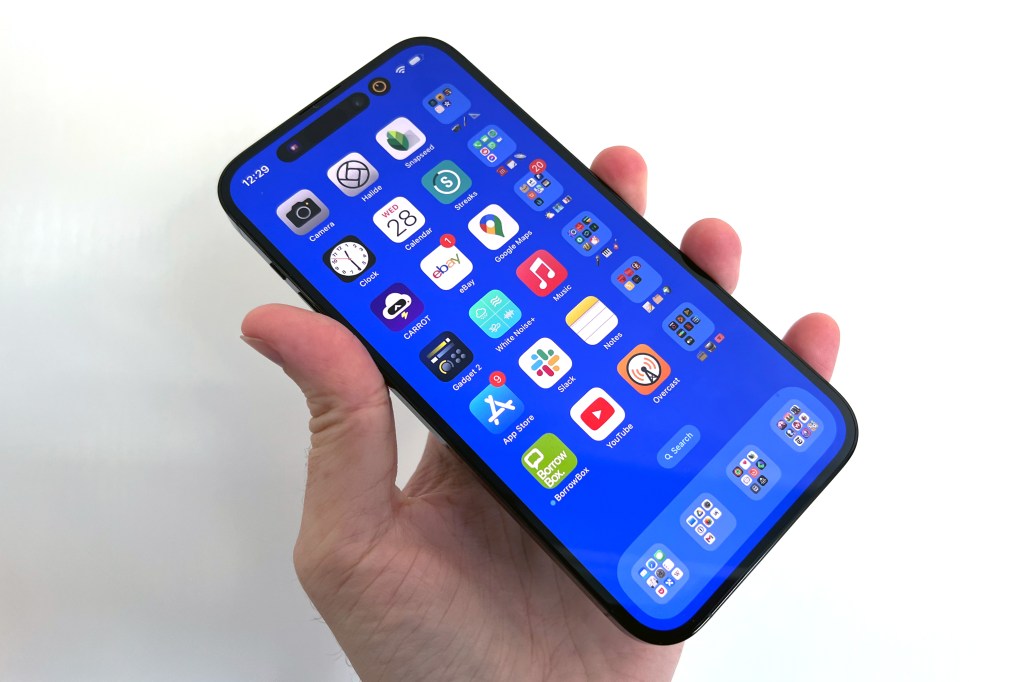
2. iPhone 14 Pro Max
The new iPhone is always the best iPhone, and the iPhone 14 Pro Max is the latest and greatest. Until later this year when the new generation lands. It may be expensive, but if gaming on iPhones is your thing the Pro Max is the one to get.
It’s not just the larger, brighter screen, with its new ‘dynamic island’ that replaces the notch, that makes this a must. It’s the A16 Bionic processor, which you won’t find on the baseline iPhone 14, and a massive increase in GPU memory bandwidth over the A15. This extra power makes the phone much faster than the competition, meaning you’ll have better frame rates and have to wait less time as games load, and unlocks extra antialiasing modes so your games look smoother.
There’s really more power in this phone than anyone really needs. But, after all, it’s the gamers who push their phones to the edge of their performance by demanding to play titles like Total War: Medieval 2 on the train. With an iPhone 14 Pro Max, that’s no problem.
Read more: Apple iPhone 14 Pro Max review
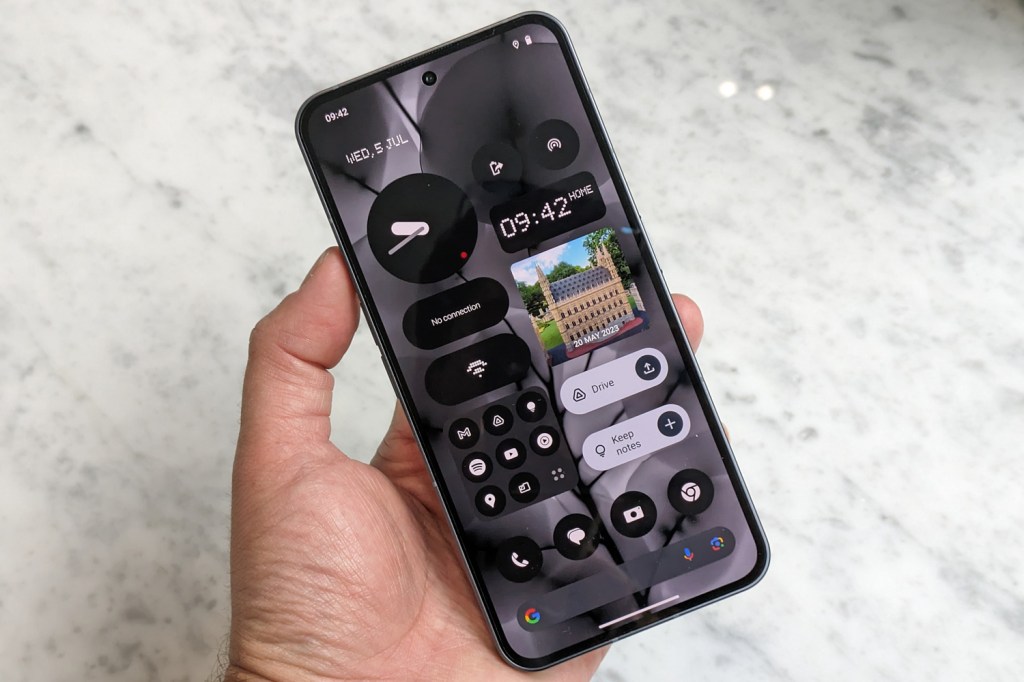
3. Nothing Phone 2
Phone 2 builds on what made Nothing’s first smartphone so unique, with more glyph lighting and a streamlined take on Android that might just be the best custom interface we’d used since the days of HTC Sense. It’s the larger 6.7in screen and Snapdragon 8+ Gen 1 CPU that make it a top choice for gamers, though.
It isn’t the very latest silicon, but a sensible display resolution means it doesn’t have to work overtime to play demanding titles, and is still potent enough to take advantage of the 120Hz refresh rate. That panel looks the business, too, with ample brightness, HDR support and skinny bezels on all four sides.
The 128GB model can be snapped up for £599, but with no microSD card expansion, we’d recommend shelling out for the 256GB model. At £629 it’s still a whole lot cheaper than a Google Pixel 7 Pro, Samsung Galaxy S23 or OnePlus 11.
Read more: Nothing Phone 2 review
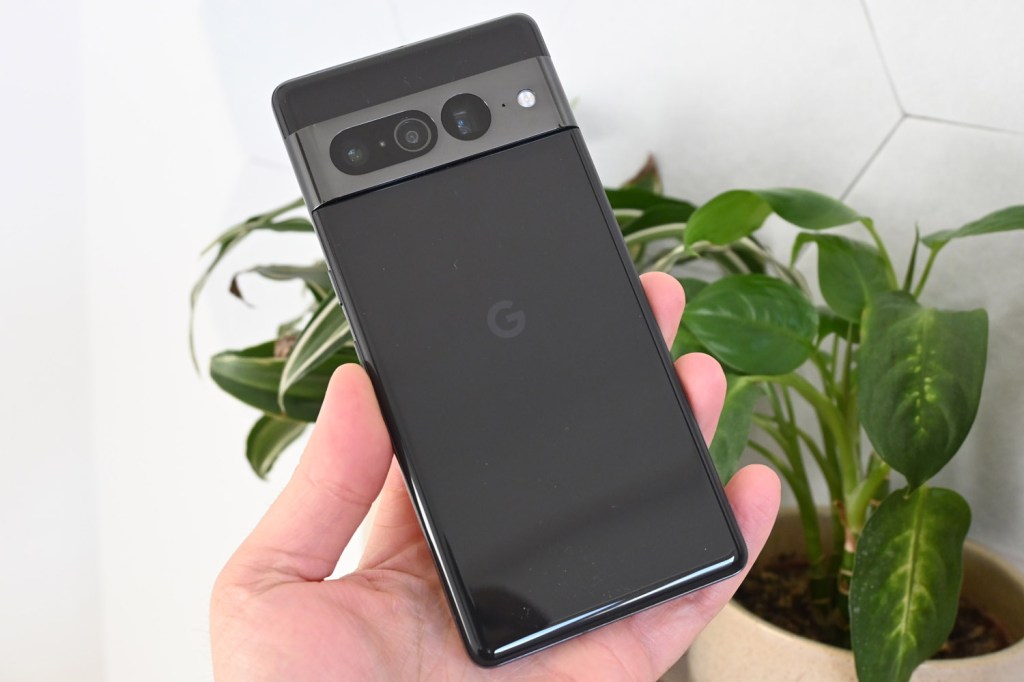
4. Google Pixel 7 Pro
Google did a good job with the Pixel 6, but the Pixel 7, with its faster processor, built upon those foundations to become an excellent gaming phone. The Pro version is top of the range, with a 6.7in AMOLED screen that boasts a 120Hz refresh rate, HDR10+ capabilities, and a coating of Gorilla Glass. It’s one of the first phones to come with Android 13 too.
The new G2 Tensor chip is an eight-core processor with higher clock speeds, upgraded cores, and a new GPU compared to the original. It’s great at things like voice recognition and anything that requires crunching an algorithm. It’s no slouch for gaming, thanks to a decent helping of RAM, meaning performance is up there with other flagship phones. The 5000mAh battery will keep you playing all day if you need to.
Read more: Google Pixel 7 Pro review

5. Samsung Galaxy S23 Ultra
Samsung’s Galaxy smartphones have always been capable gamers, and the S23 Ultra picks up where the old Note range left off. That means it has a 6.8in AMOLED that can get very bright and has an excellent resolution of 3088×1440 pixels, for a density of around 500ppi. This beats a lot of phones on the market.
Inside you’ll find that Snapdragon 8 Gen 2 chipset clocked higher than any rival and, again, up to 12GB of RAM is available. The base model, with 256GB of storage, gets 8GB.
While the S-Pen stylus is more normally used in drawing apps or as a writing implement, there are uses for it in games too, with a few built entirely with pen input in mind. If you want a fantastic performer and don’t mind paying a premium for it, this is a great buy.
Read more: Samsung Galaxy S23 Ultra review

6. Asus Zenfone 10
Pretty much your only choice for a top-tier Android smartphone that isn’t also gigantic, the Zenfone 10 squeezes a Snapdragon 8 Gen 2 behind a screen that measures a modest 5.9in. Asus hasn’t skimped elsewhere, either, with a headphone port, up to half a terabyte of internal storage, and a 144Hz AMOLED panel that’s a real treat for the eyes.
It undercuts most flagship rivals, including the Galaxy S23 and Google pixel 7 Pro, although it’s not quite as affordable as a OnePlus 11. All three have bigger screens, and therefore take up a lot more room in your pocket; the Asus is a lot more palm-friendly.
You can snap one up in a selection of colours, which range from subtle to striking, and the 4300mAh battery is usually good enough for all-day use – at least when you’re not blitzing high scores.
Read more: Asus Zenfone 10 review


